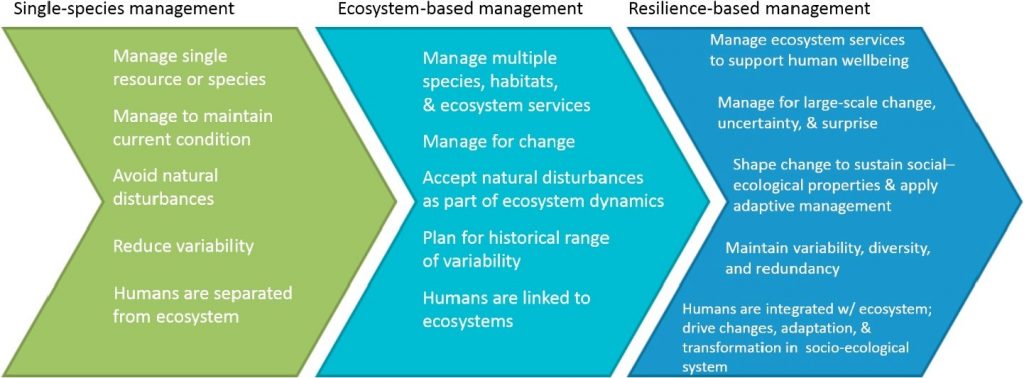Why Conduct RBM?
Resilience-based management (RBM) builds on lessons learned from decades of coral reef management, specifically ecosystem-based management (EBM). Both RBM and EBM emphasize protecting key ecosystem structure and function, and consider resilience, cumulative impacts, and the larger socio-ecological system. A key difference of RBM is that it acknowledges that humans are capable of driving change, adaptation, and transformation, and thus seeks to address human behavior. Preparing for transformation is likely to become an increasingly important aspect of managing for resilience.ref Click here for a description of other integrated management approaches.

Evolution of natural resource management. Source: Mcleod et al. 2019.
Applying RBM has several key benefits:
- Allows managers to prioritize management actions that best address future threats to the socio-ecological system and encourages adaptation and transformation.
- Informs how resources like funding and staff time will be allocated to various strategies and projects based on identified threats to the socio-ecological system.
- Provides a way to manage reefs under future climate change scenarios.
- Empowers local conservation practitioners by providing hope and validating the role and importance of local management actions and linking the well-being of coral reefs and local communities more closely.
- Serves as a vehicle to deliver on global commitments to climate change, such as CBD Aichi Target 10 and Target 15, Paris Climate Agreement Article 7 and Article 8, UN Sustainable Development Goals Target 14.2.

